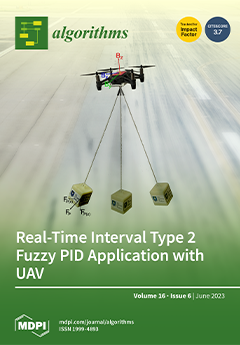To separate the noise and important signal features of the indoor carbon dioxide (CO
2) concentration signal, we proposed a noise cancellation method, based on time-varying, filtering-based empirical mode decomposition (TVF-EMD) with Bayesian optimization (BO). The adaptive parameters of TVF-EMD, that is,
[...] Read more.
To separate the noise and important signal features of the indoor carbon dioxide (CO
2) concentration signal, we proposed a noise cancellation method, based on time-varying, filtering-based empirical mode decomposition (TVF-EMD) with Bayesian optimization (BO). The adaptive parameters of TVF-EMD, that is, bandwidth threshold
and B-spline order
, were determined by the BO algorithm, and the correlation coefficient for the kurtosis index (
CCKur) constituted the objective function. Initially, the objective function
CCKur was introduced to systematically identify anomalous signals while preserving signal feature extraction between the modes and the input signal. Subsequently, the proposed signal noise cancellation model based on TVF-EMD and the BO algorithm were employed, along with the Hurst exponent, to extract the sensitive mode. An examination of the optimization indices of the decomposed intrinsic mode functions (IMFs), namely
CC, Kur, MI, EE, EEMI, and
CCKur, revealed that the synthetic measurement index
CCKur and objective function
fitness were reasonable and effective. The proposed method exhibited better signal cancellation performance, compared to that of TVF-EMD with the default values, EMD, the moving average method, and the exponential smoothing method.
Full article





